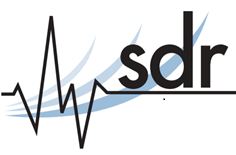Related Interagency Groups:
NSTC Subcommittee on Resilience Science and Technology
The Subcommittee on Resilience Science and Technology (SRST) was created to address cross-cutting resilience S&T issues related to all threats and hazards, at all stages of risk management, considering both physical and social science dimensions.
The SRST focuses on:
- Supporting the formulation and implementation of the Federal government’s roles in resilience science and technology (including research and development), reflecting critical relationships among international, state/local/tribal territorial, private sector, and other partners
- Developing a framework to mainstream resilience research and development, as well as science and technology into systems, infrastructure, and organizations
- Coordinating Federal resilience research and development responsibilities per Federal policy, including risk management and exercising National essential functions
Federal Interagency Floodplain Management Task Force
The Federal Interagency Floodplain Management (FIFM) Task Force helps agencies to create, improve, and carry out programs and policies that to reduce flood losses and protect the natural environment.
Emergency Support Function Leadership Group
The Emergency Support Function Leadership Group (ESFLG) is led by FEMA, and provides a forum for federal departments and agencies to exchange information and coordinate decision making during disaster response. The ESFLG helps the interagency address matters related to community lifelines, emergency response policy, preparedness, operations, and training.
Mitigation Framework Leadership Group
The mission of the Mitigation Framework Leadership Group (MitFLG) is to increase awareness, coordination, and action of Federal mitigation efforts according to the National Mitigation Framework in order to strengthen the nation’s disaster resilience.
Recovery Support Function Leadership Group
The Recovery Support Function Leadership Group (RSFLG) identifies and facilitates resolution of recovery-related operational and policy challenges. The RSFLG provides a forum for oversight of planning efforts and information exchange regarding programs that affect the roles and responsibilities of the six Recovery Support Functions (RSFs) as described in the National Disaster Recovery Framework (NDRF).
National Earthquake Hazards Reduction Program
The National Earthquake Hazards Reduction Program (NEHRP) is the Federal government's coordinated long-term nationwide program to reduce risks to life and property in the United States that result from earthquakes. Established by Congress in 1977, NEHRP seeks to reduce earthquake-related losses through improved design and construction methods and practices, land use controls and redevelopment, prediction techniques and early-warning systems, coordinated emergency preparedness plans, and public education and involvement programs.
Space Weather Operations, Research, and Mitigation (SWORM) Interagency Working Group
This Federal coordinating body is organized under the National Science and Technology Council’s Space Weather, Security, and Hazards (SWSH) Subcommittee. The SWORM coordinates Federal Government department and agency activities to meet the goals and objectives specified in the National Space Weather Strategy and Action Plan (NSW-SAP) released in March 2019. The NSW-SAP supersedes the National Space Weather Strategy and the National Space Weather Action Plan, both released in October 2015.
National Tsunami Hazard Mitigation Program
The National Tsunami Hazard Mitigation Program (NTHMP) is designed to reduce the impact of tsunamis through hazard assessment, warning guidance, and mitigation. The program is a partnership between the National Oceanic and Atmospheric Administration (NOAA), the United States Geological Survey (USGS), the Federal Emergency Management Agency (FEMA), the National Science Foundation (NSF), and the 28 U.S. Coastal States, Territories, and Commonwealths.
National Windstorm Impact Reduction Program
In 2004, Congress created the National Windstorm Impact Reduction Program (NWIRP) to reduce the loss of life and property from windstorms. The purpose of NWIRP is to improve the understanding of windstorms and windstorm impacts through research and investment and to develop and encourage implementation of cost-effective mitigation measures to reduce those impacts.
U.S. Global Change Research Program
The U.S. Global Change Research Program (USGCRP) coordinates and integrates federal research on changes in the global environment and their implications for society. The USGCRP began as a presidential initiative in 1989 and was mandated by Congress in the Global Change Research Act of 1990 (P.L. 101-606), which called for "a comprehensive and integrated United States research program which will assist the Nation and the world to understand, assess, predict, and respond to human-induced and natural processes of global change."

